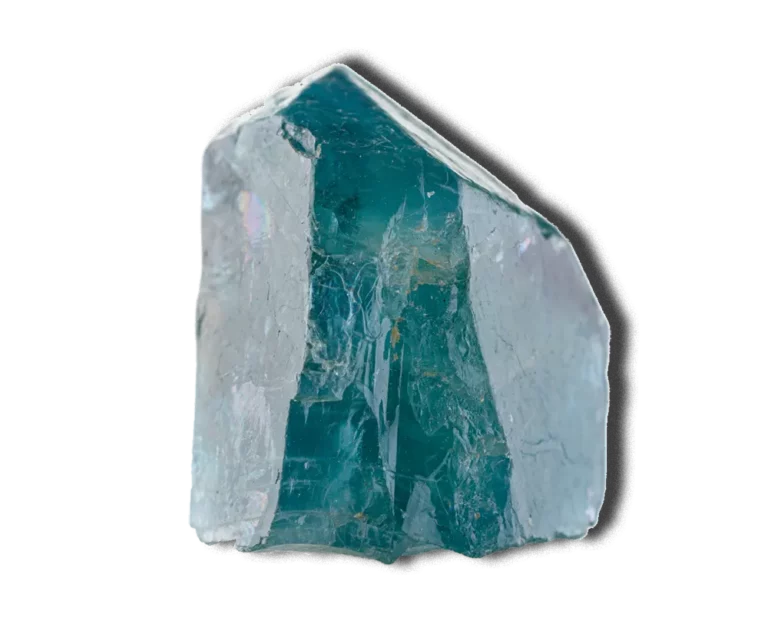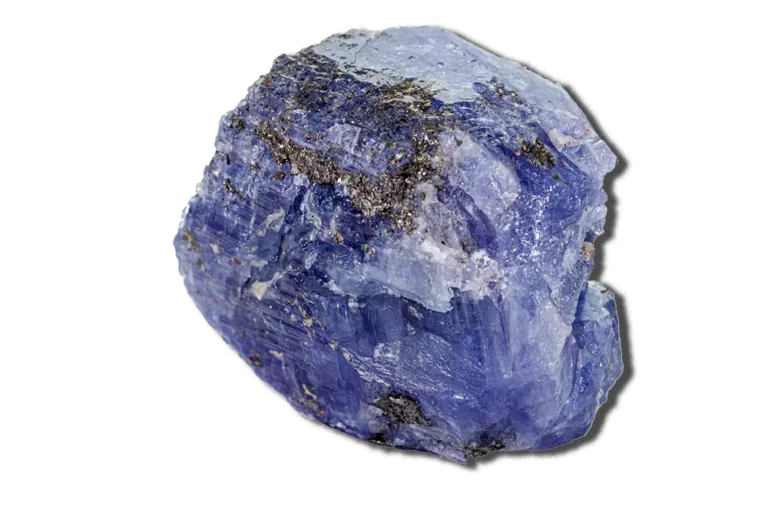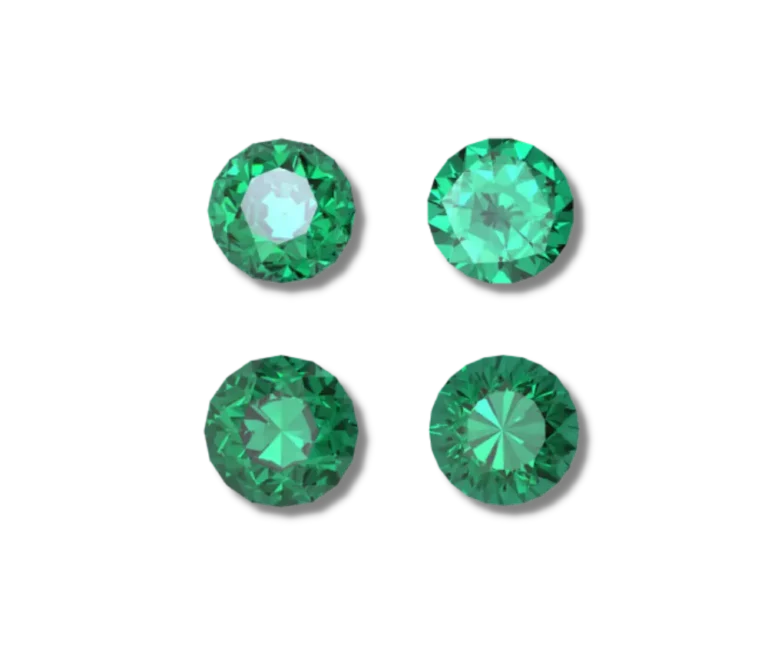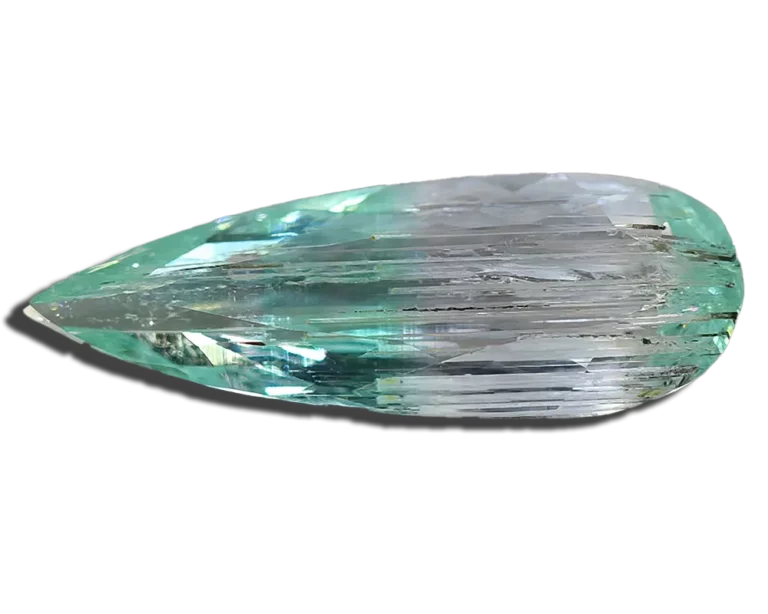The Great Star of Africa: Unveiling the History of the World’s Largest Gem-Quality Rough Diamond
The Great Star of Africa, also known as the Cullinan I, is one of the most fascinating and valuable gemstones on the planet. Carved from the largest gem-quality rough diamond ever discovered — the famed Cullinan Diamond — this stunning gem is a testament to nature’s incomparable beauty and the skillful craftsmanship of diamond cutters.
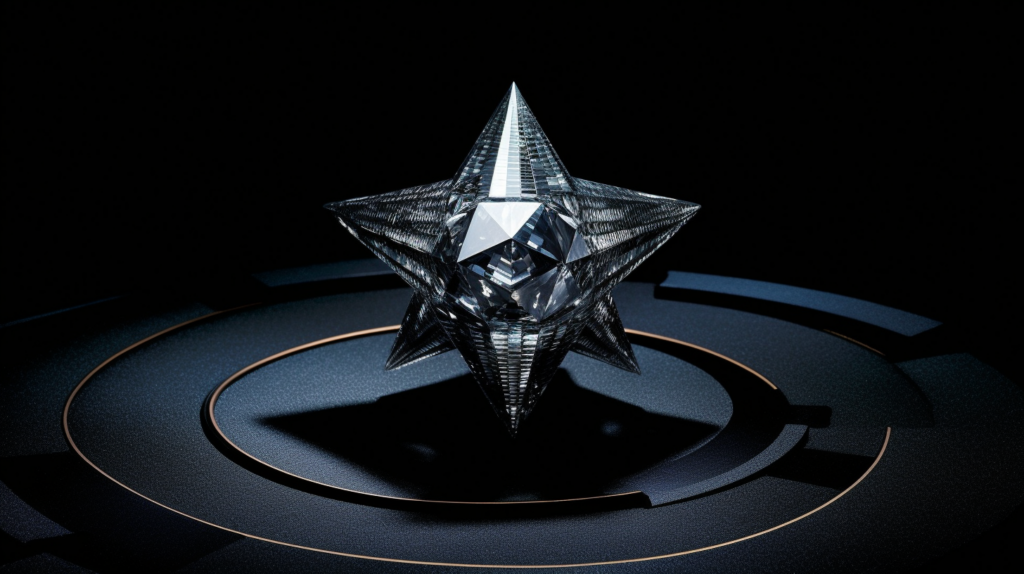
The Great Star of Africa now adorns the top of the Sovereign’s Sceptre with Cross, one of the magnificent pieces of the British Crown Jewels. This illustrious placement underscores the importance of this extraordinary gemstone. Weighing an impressive 530.2 carats, the Great Star of Africa stands as the largest clear-cut diamond in existence.
In This Article
The Importance of the Cullinan Diamond in the Gem Industry
The discovery of the Cullinan Diamond, from which the Great Star of Africa was born, significantly impacted the global gem industry. Weighing a staggering 3,106.75 carats in its rough form, this precious stone set a new standard for gem-quality diamonds. The sheer size and quality of this stone commanded international attention, elevating the status of South Africa’s diamond industry and forever changing the narrative around large, quality gemstones.
In the history of gemology, the Cullinan Diamond remains an iconic symbol of the treasures that the earth can yield. Its transformation into the Great Star of Africa and multiple other gemstones showcases the tremendous skill present within the diamond cutting and polishing industry. Together, the discovery and expert handling of the Cullinan Diamond underscore the complex and remarkable journey of gemstones from mine to market.
Discovery and Early History of the Cullinan Diamond
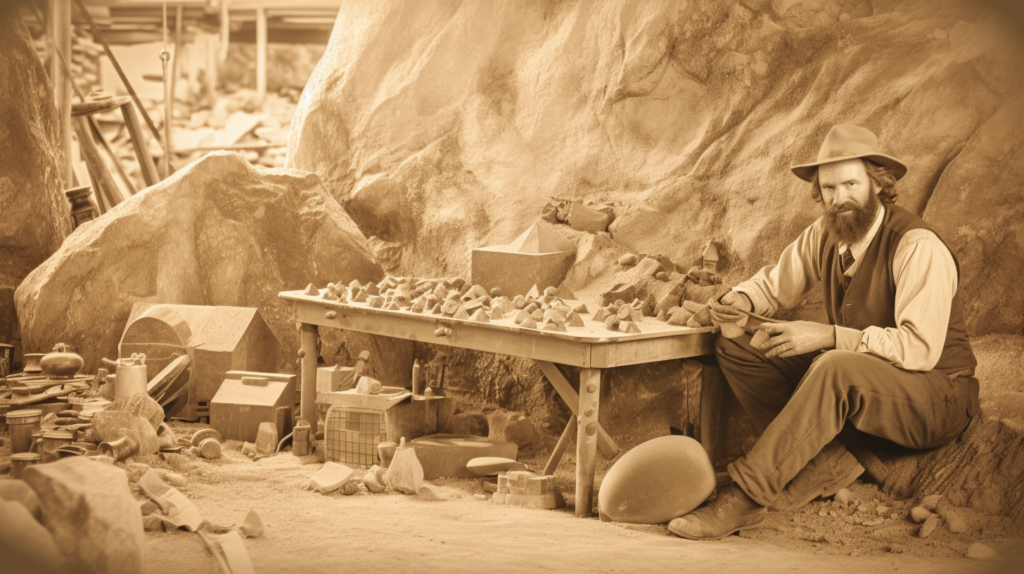
The Day of Discovery: January 26, 1905
The date was January 26, 1905, when the earth revealed one of its most prized possessions – the Cullinan Diamond. Discovered in the Premier Mine in Pretoria, South Africa, this remarkable gemstone was spotted by Frederick Wells, the mine’s superintendent. Found just 18 feet below the earth’s surface, the rough diamond’s size was unparalleled, sparking a global frenzy in the gem industry.
The Premier Mine, where the iconic Cullinan Diamond was discovered, was owned by Sir Thomas Cullinan. A renowned figure in the mining industry, Sir Thomas Cullinan had founded the Premier Diamond Mining Company in 1902. The discovery of this massive diamond further bolstered the reputation of the Premier Mine, making it one of the most notable sources of extraordinary gemstones in the world.
The Physical Properties of the Cullinan Diamond
The Cullinan Diamond was a spectacle to behold. As the largest rough diamond ever discovered, it weighed 3,106.75 carats, which is approximately 1.37 pounds. Its dimensions were equally impressive, measuring 4 inches long, 2.5 inches wide, and 2.6 inches deep.
This extraordinary diamond boasted a blue-white hue, signifying the presence of boron in the stone. Its crystalline structure was also unique, possessing a cleavage face parallel to the octahedral crystal face. This indicated that the Cullinan Diamond was a fragment of an even larger crystal, further adding to the intrigue surrounding this incredible gemstone.
Journey of the Cullinan Diamond: From Rough Stone to Crown Jewel
The Unsold Years in London
Post its discovery, the Cullinan Diamond had a period of uncertainty. Despite its size and allure, its initial years were spent unsold in London. The diamond’s sheer size made it exceedingly difficult for prospective buyers to properly assess its worth, making them hesitant to invest.
Acquisition by the Transvaal Colony Government
The diamond’s fate took a significant turn when the Transvaal Colony Government, under the leadership of Prime Minister Louis Botha, decided to purchase the gemstone in 1907. The government paid the hefty sum of £150,000, equivalent to approximately £17 million today, acknowledging the diamond’s unique value and the prestige it brought to South Africa.
Presentation to Edward VII: The British King

In a gesture of allegiance and unity, the Transvaal Colony Government presented the Cullinan Diamond to King Edward VII on his 66th birthday. The presentation was more than a mere gift; it symbolized the end of the bitter hostilities of the Boer War and signified a new era of unity between Britain and South Africa. This profound gesture laid the groundwork for the diamond’s transformation from an uncut gemstone to a crowning jewel of the British Monarchy.
The Transformation of the Cullinan Diamond
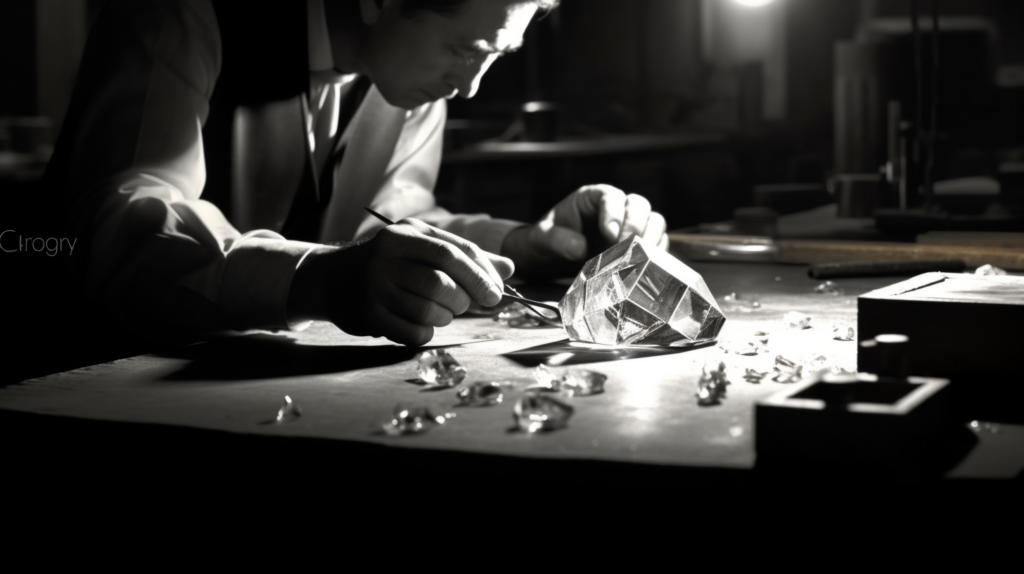
The Expertise of Joseph Asscher & Co.
The task of cutting the world’s largest diamond fell to the renowned Amsterdam firm of Joseph Asscher & Co., prominent diamond cutters known for their craftsmanship and innovative techniques. Joseph Asscher himself was entrusted with the responsibility of cutting the Cullinan Diamond, a testament to his world-class expertise in diamond cutting.
The Cutting Process: Producing Various Cuts and Sizes
The cutting process of the Cullinan Diamond was a meticulously planned and executed operation. Initial studies of the diamond took months, followed by a careful cleaving of the stone into two main parts. The cleaving process alone took four days, with the first incision reportedly causing the blade to break.
The diamond was then further cut into nine large stones and 96 smaller ones, with the two largest stones named the Great Star of Africa and the Second Star of Africa. These significant divisions of the diamond showcased the deftness of Asscher’s work, successfully maintaining the diamond’s exceptional quality while creating multiple exquisite pieces.
The Great Star of Africa and the Second Star of Africa
The two largest cut stones, the Great Star of Africa, and the Second Star of Africa, were the crowning achievements of Asscher’s skillful work. The Great Star of Africa, weighing 530.2 carats, was the largest clear-cut diamond in the world and still retains that title. The Second Star of Africa, weighing 317.4 carats, holds the title of the fourth-largest cut diamond in the world.
These two gemstones, embodying the brilliance of the original Cullinan Diamond, were destined to become a part of the British Crown Jewels, symbolizing the opulence and power of the British Monarchy.
The Cullinan Diamonds and the Crown Jewels of the United Kingdom
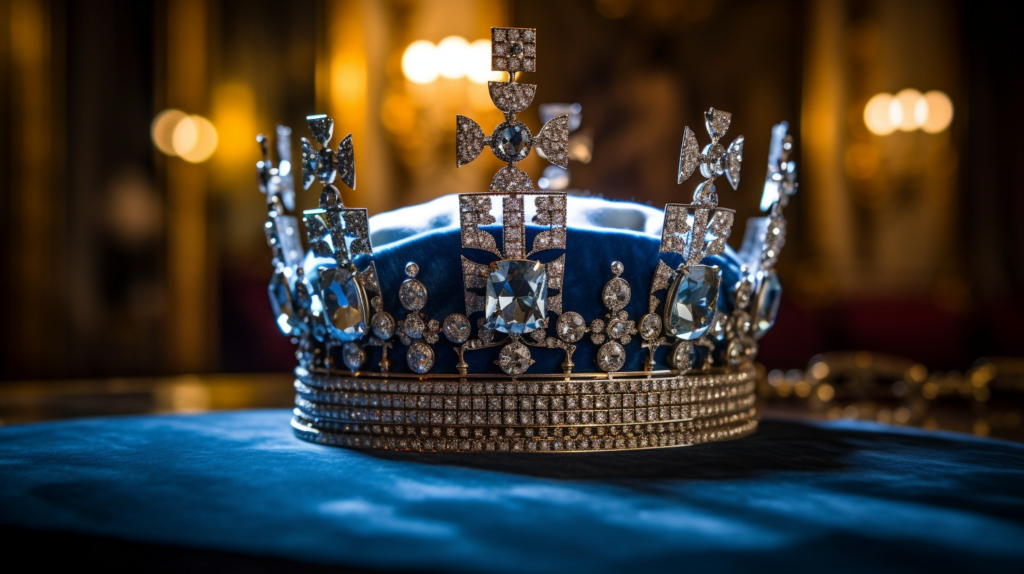
The Sovereign’s Sceptre with Cross and the Imperial State Crown
The Great Star of Africa and the Second Star of Africa, the two largest pieces of the Cullinan Diamond, were carefully incorporated into the British Crown Jewels. The Great Star of Africa was set into the Sovereign’s Sceptre with Cross, a symbol of royal power and justice. This exquisite piece was reworked in 1910 to accommodate the gemstone, emphasizing its unique grandeur.
Meanwhile, the Second Star of Africa found its home in the Imperial State Crown, complementing the ‘Black Prince’s Ruby’ and the ‘St. Edward’s Sapphire’. Worn by British monarchs at their coronation and other state functions, the crown’s brilliance was significantly enhanced by the addition of the Second Star of Africa.
Queen Elizabeth II and Her Inherited Cullinan Diamonds
The British Monarchy’s current reigning monarch, Queen Elizabeth II, has been photographed and filmed wearing the Imperial State Crown at numerous state functions. The Queen’s appreciation for the stunning beauty of the Cullinan Diamonds adds to the stones’ historical significance and enduring legacy.
The Cullinan Diamonds, particularly the Great Star of Africa and the Second Star of Africa, continue to symbolize the enduring grandeur of the British Monarchy. Their incorporation into the Crown Jewels stands as a testament to the extraordinary beauty of these gemstones and their import in history.
The Cullinan Diamond: A Geological Marvel
Formation and Age of the Cullinan Diamond
Geologically speaking, the Cullinan Diamond is a marvel. Diamonds are created over billions of years, deep within the Earth’s mantle under extreme heat and pressure. Once formed, they’re propelled towards the surface by volcanic eruptions through kimberlite and lamproite pipes. The Cullinan Diamond is no exception to this process.
However, what sets the Cullinan Diamond apart is its size and purity. Theories suggest that the size of the gem indicates a deep mantle origin, possibly as deep as 500 kilometers below the Earth’s surface. Its tremendous size and clarity suggest favorable conditions for its formation and preservation, making it a true geological anomaly.
The Rainbow Effect: A Unique Feature of the Diamond
Despite being categorized as a white diamond, the Cullinan Diamond exhibits a rare and enchanting optical phenomenon known as the ‘rainbow effect’. When light hits the diamond at particular angles, it refracts within the gem, resulting in a visible spectrum of colors. This spread of light, also known as ‘fire’, adds to the diamond’s appeal and its value in the gemological world.
The Cullinan Diamond’s unique optical properties, coupled with its immense size and clear quality, highlight its status as a geological marvel. Its existence continues to intrigue gemologists and geologists alike, providing an outstanding example of the miraculous works of nature.VII. Public Exhibition and Security of the Cullinan Diamond
Public Display in Johannesburg and London
Before its transformation into various cut stones, the Cullinan Diamond was publicly exhibited in Johannesburg and London. These exhibits allowed the public to marvel at the world’s largest gem-quality diamond. The diamond was displayed in a specially designed case, showcasing its unique size and captivating allure.
Transportation and Security Measures
Given its immense value, the transportation of the Cullinan Diamond was a significant challenge. While a phony stone was sent via a heavily guarded ship to throw off potential thieves, the original diamond was sent to England in a parcel via standard mail. This clever misdirection ensured the safe arrival of the diamond in London.
Once cut, the Cullinan Diamonds were incorporated into the British Crown Jewels. Today, they are securely housed in the Jewel House at the Tower of London, heavily guarded and under constant surveillance. These high-security measures ensure the safety of these priceless gemstones, protecting them from potential theft and damage. Their display at the Tower of London allows visitors from around the world a glimpse at these historic and stunning jewels.
The Cultural and Historical Significance of the Cullinan Diamond
Impact on the Diamond Industry
The discovery of the Cullinan Diamond had a profound impact on the diamond industry. It propelled South Africa to the forefront of the global gem market and underscored the potential for finding significant gem-quality diamonds. The cutting and transformation of the Cullinan Diamond into multiple beautiful gemstones showcased the skill and precision of the diamond cutting industry, setting new standards for gem cutting and polishing.
The Diamond as a Symbol of Power and Luxury
As part of the British Crown Jewels, the Cullinan Diamonds, particularly the Great Star of Africa and the Second Star of Africa, have come to symbolize power, wealth, and luxury. Their use in the Sovereign’s Sceptre with Cross and the Imperial State Crown underlines the grandeur and opulence of the British Monarchy. The diamonds continue to captivate audiences globally, symbolizing both the glory of nature and human craftsmanship.
Key Personalities Involved in the Diamond’s History
The journey of the Cullinan Diamond is interlaced with the lives of several key personalities – from Frederick Wells, who discovered the diamond, to Sir Thomas Cullinan, the owner of the Premier Mine, and Joseph Asscher, who transformed the rough stone into the Great Star of Africa and other gems. Additionally, monarchs like King Edward VII and Queen Elizabeth II, who wore the gems as part of the Crown Jewels, have a pivotal role in the diamond’s history.
Conclusion: The Lasting Legacy of the Great Star of Africa
The Great Star of Africa Today
Today, the Cullinan Diamonds, especially the Great Star of Africa, remain a source of enchantment and intrigue. Displayed as part of the British Crown Jewels, these gems continue to draw visitors from around the world, their awe-inspiring beauty vivid proof of the Earth’s capacity to produce stunningly beautiful natural objects.
Final Remarks on the Cullinan Diamond
The discovery of the Cullinan Diamond and its subsequent journey from a rough gemstone to a polished jewel of the British Crown Jewels encapsulates a truly remarkable chapter in the annals of gemology. Its legacy extends beyond its physical characteristics, intertwining with the history of South Africa, the British Monarchy, and the global gem industry. The Cullinan Diamond and its derivatives, including the Great Star of Africa, remain enduring symbols of natural beauty, human ingenuity, and royal grandeur.
Frequently Asked Questions (FAQs)
What is the Great Star of Africa and why is it important in the gem industry?
The Great Star of Africa, also known as the Cullinan Diamond, is the largest gem-quality rough diamond ever discovered. It holds immense significance in the gem industry due to its size, quality, and the fact it has been cut into many brilliant gems, two of which are part of the British Crown Jewels.
How was the Cullinan Diamond discovered and what are its physical properties?
The Cullinan Diamond was discovered on January 26, 1905, at the Premier Mine in South Africa by Thomas Cullinan. The diamond is famed for its extraordinary size and weight (originally 3106.75 carats), its exceptional clarity, and its blue-white color.
Who owned the Cullinan Diamond initially and who owns it now?
The Cullinan Diamond was initially unsold in London for a few years before it was acquired by the Transvaal Colony Government. It was then presented to King Edward VII of Britain. Today, the gems resulting from the diamond are primarily part of the British Crown Jewels.
Who cut the Cullinan Diamond and what were the results of the cutting process?
The Cullinan Diamond was cut by Joseph Asscher & Co., a distinguished diamond-cutting firm based in Amsterdam. The cutting process produced various cuts and sizes, the two largest of which are known as the Great Star of Africa and the Second Star of Africa.
How is the Cullinan Diamond secured and exhibited?
The Cullinan Diamond, now in various cut forms, is securely held in the Tower of London as part of the Crown Jewels. For public display, stringent security measures are ensured. The diamond has also been exhibited in Johannesburg and London.


